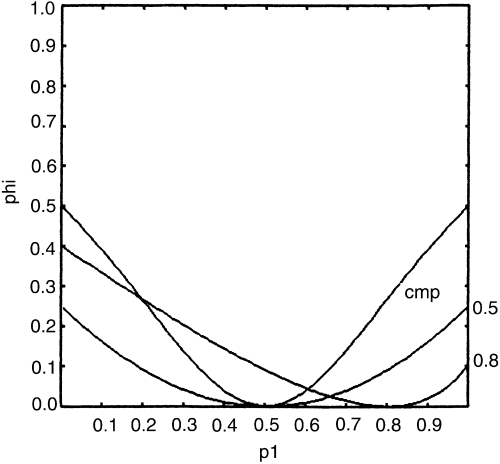
- Select a language for the TTS:
- UK English Female
- UK English Male
- US English Female
- US English Male
- Australian Female
- Australian Male
- Language selected: (auto detect) - EN
Play all audios:
VALLEJO, Calif. — The quiet lanes and gentle vistas of Thomas Kinkade’s paintings beguile the faithful. Reproduced on calendars and coffee cups, in prints and on wallpaper, it’s a gauzy,
weightless world in which time stands still. Admirers react with awe. Critics call it awful. In the sunbaked hills of a former ranch 30 miles northeast of San Francisco, families with at
least $400,000 to spend on Kinkade’s vision will call it home. The California painter has licensed his name and artistic inspiration to Taylor Woodrow Homes, a London-based housing
developer. With Kinkade’s paintings as a guide, Taylor Woodrow laid out a 101-house gated community called the Village. Streets, houses, fixtures and landscaping will epitomize Kinkade’s
nostalgic style. About 300 people tour the Village’s model homes each week. Seven homes have sold so far. It is a slower pace than the developer hoped for, but in keeping with the country’s
cautious mood since the Sept. 11 terrorist attacks. With models named for Kinkade’s daughters--Chandler, Everett, Merritt and Winsor--the houses range from 1,800 to 2,600 square feet and sit
on 4,000-square-foot lots. Touches such as decorative moldings and built-in bookshelves spring from Kinkade’s fantasies of family life. Options such as a media room or wine bar bow to
modern-day California. And there are gates. Disguised as tollhouses, flanked by a fountain, the Village is nonetheless guarded. Kinkade seems abashed at the irony, but as master of an empire
that earned about $450 million in licensing fees over the last four years, he submits to the economic need. “Clearly, the gates are at odds with my vision,” Kinkade said. “I can’t imagine
that living behind gates would be something I would enjoy. But they’re a necessary sacrifice to the consumer instincts of the average home buyer.” Kinkade lives in the country near Santa
Cruz, where he gets satisfaction from “my 50-foot commute” from his home to his artist’s studio. There, he finishes about 12 paintings each year. “The studio is central to my life,” Kinkade
said. “The kids come over to visit during the day, I have an easel set up for them. It’s a foundational part of how we live.” Kinkade didn’t sit down at the drawing board with Taylor
Woodrow’s architect, but he saw and approved designs along the way. He likes the front lawns that don’t have fences. The bookcases were his idea. One of the model homes comes with an option
for a small studio; another offers a granny flat above the garage, complete with a tiny balcony. “This goes back a long way, from the early ‘90s, when I saw people were projecting themselves
into these paintings,” Kinkade said. “This was the obvious conclusion, the real-life re-creation of one of the paintings.” Kinkade’s paintings beckoned Judy Deliramich, a 47-year-old
resident of Castro Valley. She and her husband, Mark, toured the model homes this fall with an eye to the day she finishes her graduate degree at Cal State Hayward and the couple’s three
teenage daughters leave for college. “Thomas Kinkade paintings are so peaceful, you feel like you want to be inside one,” Deliramich said. “I thought if he could make something that looked
like that, I would want to live there.” From the outside, the vision held. Two-story houses with steeply pitched roofs, deep front porches and paned windows sprang straight from Kinkade’s
lexicon. Driveways lined with pavers approximate the cobblestones of Kinkade’s country villages. Old-fashioned street lamps, picket fences and meandering walkways completed the fantasy.
Indoors, however, things fell apart. The rooms felt cramped and the spaces were small, Deliramich said. Landscaping also fell short of Kinkade’s extravagant greenery, with its banks of pink
roses, purple spikes of delphinium and emerald lawns that can exist only in England. “There’s not enough water in the state of California to make a Thomas Kinkade garden,” Deliramich said,
laughing. “It wasn’t right for me, but I like what he’s doing. I think he’s got the right idea.” He’s not the first. Architects have long used structures to suggest utopia. For Frank Lloyd
Wright, it was Usonia, a synthesis of architecture and landscape that would banish urban ills. California architects Greene and Greene used the Arts and Crafts movement as their muse. “What
Kinkade is doing in creating this utopian vision is actually part of a larger historical line than himself,” said David Reid, a Berkeley writer who edited “Sex, Death and God in L.A.” “This
whole idea of high living in association with a certain kind of house or light fixture is part of a great architectural tradition,” Reid said. “What’s interesting here is that instead of
coming from an architectural school or movement, it’s coming from one painter’s imagination.” MORE TO READ




